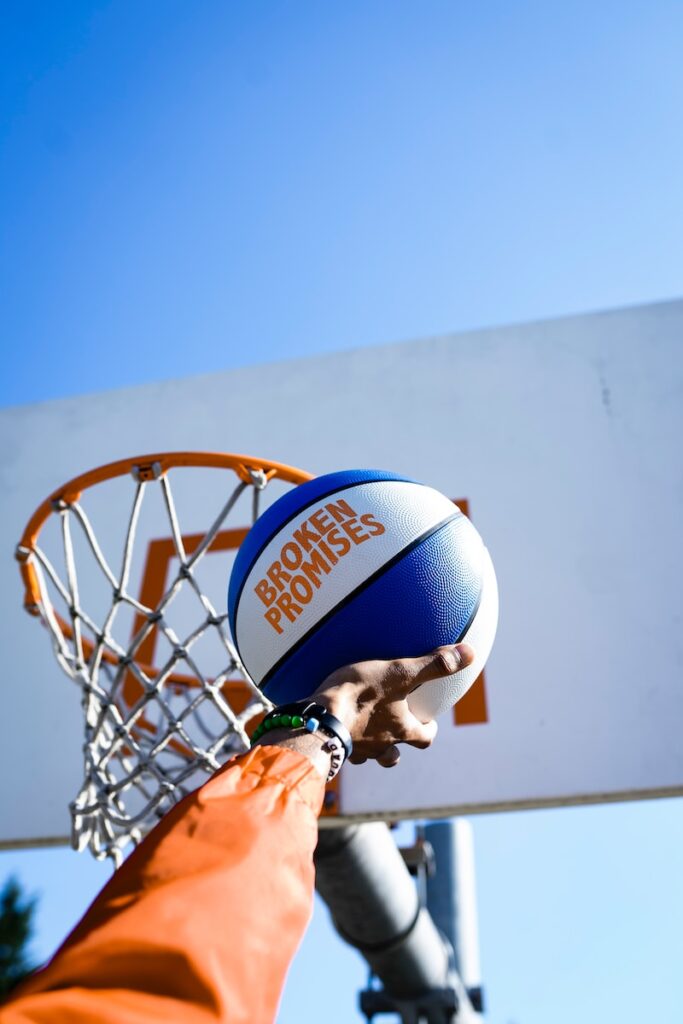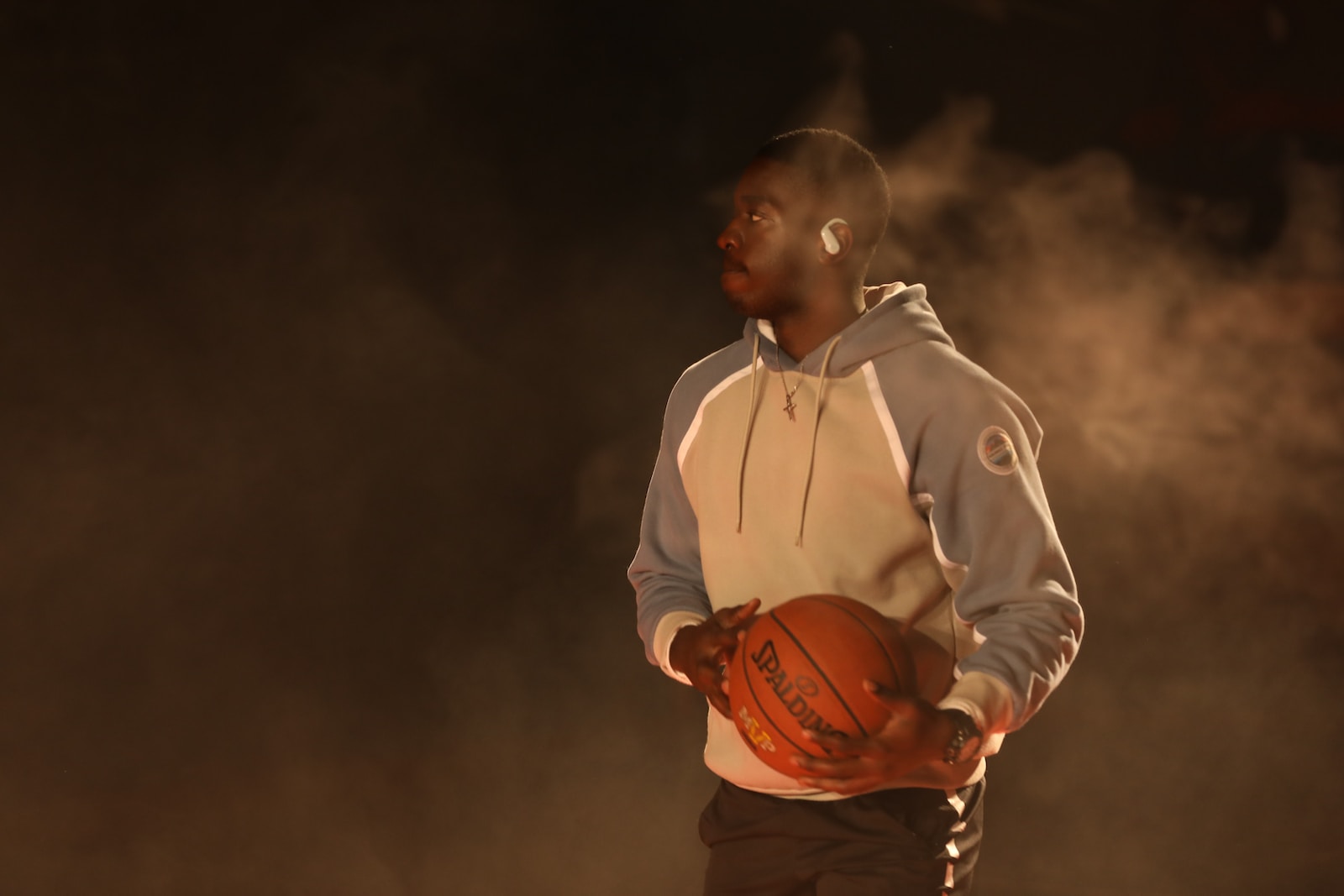If you are tasked with inbounding during a basketball game, sometimes the defense doesn’t even defend you. In this instance, you might be thinking that you have a beautifully clear shot at the basketball hoop. However, you aren’t quite sure whether or not you’re legally allowed to do so. This brings up the question, can you shoot a basketball on an inbound?
The answer to this question is yes and no. While you are legally allowed to shoot the basketball while inbounding, you aren’t able to actually make a shot when doing so. What I mean by this is that if you were to take a shot on an inbounds and make it, the referees wouldn’t count the made basket. If you miss the shot and it clangs off the rim, then play would just continue like usual with it becoming a loose ball.
It still might seem a little confusing still, so let’s keep on diving deeper into the legality of shooting during an inbounds.
Referees Wouldn’t Count It
If you attempt a shot from an inbounds pass, wherever you are on the floor, you better hope that it doesn’t go in the net. You’d be incredibly disappointed when the officials at the game wave off your made basket, and immediately give the ball to the other team as a reward. Now, if you weren’t playing in a professional league, and were just having some pick-up fun, then there’s a possibility that everybody playing would count a shot like that.
We got to see something like this happen in the NBA not long ago with Jae Crowder. Crowder was attempting to toss a pass to a teammate down the floor and accidentally put it in the net. To his and his team’s disappointment, the basket didn’t count, and they had to give it over to the other team. It might not be a great rule, but it is a consistent rule at the NFL level.
You Could Still Shoot It
We mentioned this earlier, but you can still attempt a shot at the rim during an inbounds if you wanted to. The problem is that it just wouldn’t really help you or your team if that shot happens to fall into the rim. However, if you’re looking to have some fun and launch one down the floor, there’s nothing stopping you from doing so. Perhaps you might even get lucky and a shot down the court could have a lucky bounce, landing in the hands of a teammate. But that could always be a long shot.
If you have no problem with taking this shot though, your coach might if you’re participating in a professional league. You might think that the shot was a fun attempt even if it didn’t count, but your coach wouldn’t be happy about handing the ball to the other team so recklessly. The same feeling would likely go to your teammates who watched you ignore them so that you could toss that all the way down.
Can’t Inbound To Yourself
Now, let’s say that you aren’t going to take a shot at the rim and want to inbound the ball normally. You have to have somebody else touch the ball first before you can go and make contact with it again. For example, we’ve seen it happen at the NBA level when these guys that are inbounding the ball want to regain possession really fast. If they have a defender standing straight in front of them with their back turned, the player inbounding it can toss it off their back and regain possession because it touched a defender first. It’s become quite a genius move for players that have a clear walk to the rim during an inbounds pass.
If you don’t have anybody standing in front of you, then you have to wait until a teammate comes around to grab the ball. Otherwise, you would have to just wait and stand there. I mean, you could bounce the ball inbounds if you’re on your own, but that doesn’t mean you can touch it. We saw Eric Bledsoe take a pass from a referee on the sidelines and then just proceed to walk inbounds and continue dribbling. He was instantly called for a violation and the ball was given to the other team. Simply put, you can’t inbound the ball to yourself.
Don’t Hit Your Own Backboard
There are going to be times when you are tasked with inbounding the ball while standing on the baseline. This means that the backboard will be above your head, and you’ll need to maneuver around it so that the ball can make it in play. It might not feel like it needs to be said, but do not in any way hit the backboard with the basketball.

If you happen to hit the backboard, you won’t be able to run over and pick the ball up so that you get another opportunity. The referees will whistle the ball out of bounds and give possession to the other team in the exact same position on the floor. There’s no do-over or retry for something like this, so try and keep it low and be weary of the backboard.
You Only Get Five Seconds
Whether or not you’re looking for a shot attempt during an inbounds pass or just a normal check in, you’d better make the decision quick. When the referees hand you the basketball, you will only have five seconds to get the ball in play legally or else possession gets awarded to the other team.
Five seconds might not feel like a very long time, but it certainly is when you’re standing there aiming to get a pass in to a teammate. Referees usually don’t have to enforce this rule because players know to keep things moving on inbounds passes, though that doesn’t mean they won’t shy away from calling the violation if it happens.
